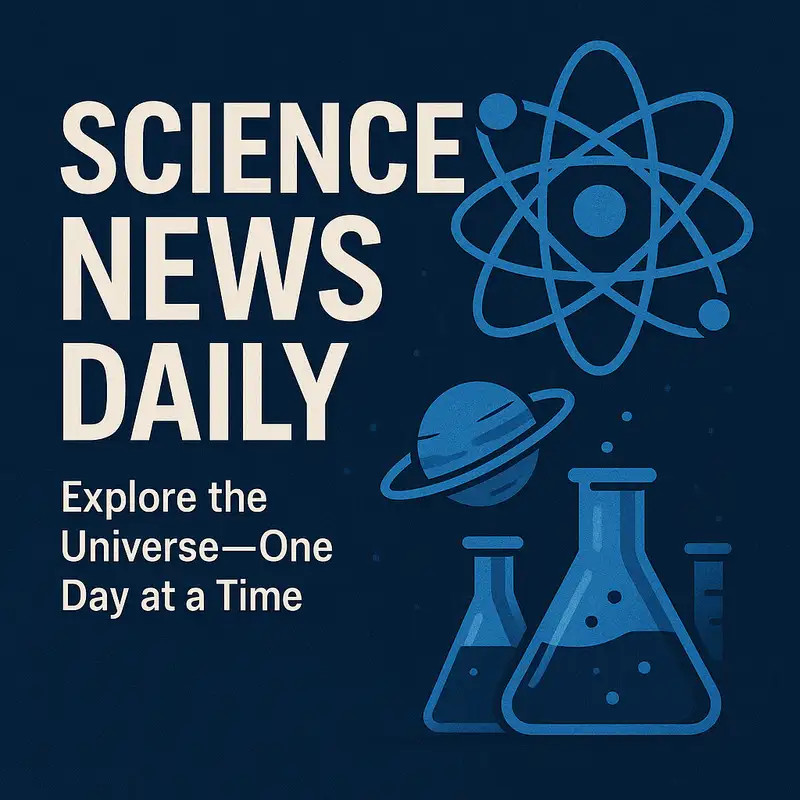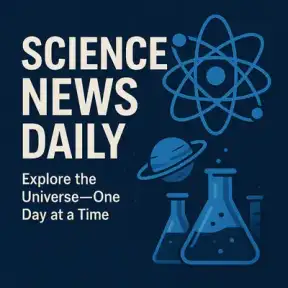🔬 World's First Hydride Ion Battery Just Changed Energy Storage Forever - Plus Mars Life Discovery
Welcome to Science News Daily, your daily dose of the latest discoveries shaping our world. I'm your host, and today we're diving into some fascinating breakthroughs that could transform everything from how we power our devices to our search for life beyond Earth.
Let's start with a revolutionary development in energy storage. Scientists have achieved something that seemed impossible just years ago: they've built the world's first rechargeable hydride ion battery. Now, you might be wondering what makes this so special. Hydride ions, which carry a negative charge, have incredibly low mass and high redox potential, making them theoretically perfect for batteries. The challenge has always been finding an electrolyte that could handle rapid ion movement while remaining stable at different temperatures. This breakthrough could pave the way for lighter, more efficient batteries that could revolutionize everything from smartphones to electric vehicles.
Speaking of technological leaps, researchers have developed what they're calling quantum inks that could completely change night vision technology. These eco-friendly quantum dots could replace the toxic metals currently used in infrared detectors, making night vision not only cleaner but potentially more accessible across industries. This is particularly exciting because it addresses both environmental concerns and performance improvements simultaneously.
Now, for those of you planning ocean adventures, here's some potentially life-saving news. Scientists have been testing bite-resistant wetsuits against great white sharks, and the results are promising. These suits aren't designed to prevent shark encounters entirely, but rather to significantly reduce the severity of injuries like cuts, punctures, and blood loss. It's a pragmatic approach that could make water activities safer without relying on deterrent methods that might not always work.
Let's venture into space, where the hunt for dark matter is heating up. The LUX-ZEPLIN detector is setting unprecedented limits on WIMP particles, those hypothetical weakly interacting massive particles that could make up dark matter. While we haven't found dark matter yet, these results are narrowing down where we need to look and opening new paths for discovering other rare physics phenomena.
But perhaps the most exciting space news comes from Mars, where the Perseverance rover has found what scientists are calling the strongest signs of life on the red planet yet. The rover's data shows that Jezero Crater once held a calm lake, leaving behind mudstones rich in organic-linked minerals. More intriguingly, scientists have found iron-phosphate and iron-sulfide nodules that suggest processes resembling microbial activity on Earth. Now, they're being cautious and say only Earth-based lab analysis can confirm what these samples truly represent, but this could be the evidence we've been searching for.
Meanwhile, the James Webb Space Telescope is giving us our first hints of an atmosphere on TRAPPIST-1e, an Earth-sized exoplanet just 40 light-years away that could potentially harbor liquid water. The data suggests the planet might have a secondary atmosphere capable of sustaining oceans or ice, though much remains uncertain.
Closer to home, researchers are uncovering some concerning findings about our Moon. New studies reveal that moonquakes, not meteorite impacts, are responsible for terrain changes in areas like the Taurus-Littrow valley where Apollo 17 landed. This seismic activity could pose real threats to the stability of future long-term lunar infrastructure as we prepare to return to the Moon.
Saturn's moon Titan is also behaving strangely, with its atmosphere tilting and shifting seasonally in ways researchers are calling unusual. This discovery, made using data from the Cassini-Huygens mission, is already shaping how we plan future exploration of this fascinating moon.
Back on Earth, there's encouraging news from the Amazon, where local communities are delivering what researchers call unprecedented conservation wins. These community-led management efforts are protecting ecosystems while sustaining local fisheries, though they need continued support to remain viable against increasing external pressures.
We're also learning about ancient life through a remarkable 310-million-year-old fossil that's rewriting the story of fish evolution. Scientists have discovered the earliest evidence of a tongue-like biting structure in an ancient fish, marking the moment when fish began using their gill structures in entirely new ways to feed.
On the health front, there are several important developments. Researchers studying the world's most common liver disease have identified three key risk factors that pose the greatest danger: high blood pressure, prediabetes or diabetes, and low HDL cholesterol. This affects more than one in three people worldwide who live with metabolic dysfunction-associated steatotic liver disease.
There's also concerning news about bottled water, which may pose serious long-term health risks by introducing tens of thousands of microplastic and nanoplastic particles into our bodies each year. And in a discovery that could benefit both bees and crops, scientists have found that pollen contains symbiotic bacteria that produce natural antimicrobial compounds, potentially offering new sustainable ways to protect both pollinators and agriculture.
Finally, researchers have identified a significant problem with current vitamin B12 guidelines. Even supposedly normal B12 levels might not be enough to protect aging brains, with studies showing that older adults with lower but technically normal B12 levels showed slower processing speeds and more cognitive issues.
That's all for today's Science News Daily. From revolutionary batteries to potential Martian life, from quantum dots to ancient fish fossils, science continues to surprise and inspire us. Keep looking up, keep asking questions, and we'll see you tomorrow for another journey through the incredible world of scientific discovery.

